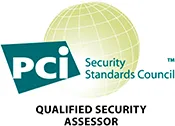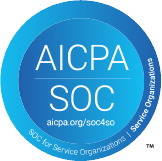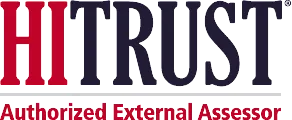
SOC Compliance
SOC compliance consulting and reporting for SOC 1, SOC 2, SOC 3, and SOC for Cybersecurity
At BARR, we are committed to guiding you through the engagement process.
Why BARR for SOC Reporting
System and Organization Controls (SOC) Examinations
Differentiate your organization by reporting on controls that increase transparency and build trust with internal and external stakeholders.
A SOC 1 report, once known as SSAE16, helps service organizations demonstrate their controls specific to the client’s financial reporting. The report is most applicable when the service provider performs financial transaction processing or supports a transaction processing system. Control objectives are not pre-defined and need to be scoped prior to the reporting engagement or during a readiness assessment. SOC 1 reports are focused on user entities’ internal control over financial reporting (ICOFR). Examples of organizations that should consider a SOC 1 audit include: Cloud ERP service providers, financial services, payroll processing, payment processing, healthcare claims processing and data center colocation.
SOC 2 reports apply more broadly to operational controls covering one or more of the five Trust Services Principles (TSPs): Security, availability, confidentiality, processing integrity, and/or privacy across a variety of systems. Examples of organizations that should consider SOC 2 compliance include: Cloud service providers (e.g., SaaS, IaaS, PaaS), enterprise system housing third party data, IT systems management and data center colocation.
Much like the SOC 2 report, the SOC 3 examination reports on a service provider’s system security, availability, processing integrity, confidentiality, and/or privacy related to the Trust Services Principles; however, this report is considered to be for general use and can be distributed on a website for the public to read. Examples of organizations that should consider a SOC 3 report include: Cloud service providers (e.g., SaaS, IaaS, PaaS), enterprise system housing third party data, IT systems management and data center colocation.
Launched in 2017, SOC for Cybersecurity is a reporting framework over an entire entity’s cybersecurity risk management program and related controls. Unlike the traditional SOC reports, SOC for Cybersecurity can have other specific uses such as management reporting to a board or audit committee and a mechanism to demonstrate and communicate due diligence and due care in the entity’s cybersecurity program. A SOC for Cybersecurity report can be beneficial even if an organization has already achieved SOC 2 compliance.
How a SOC Report Works
Phase I SOC Readiness Assessment
Concerns about security and compliance reporting drive organizations to seek help with review of their procedures before undergoing the SOC compliance audit. The purpose of a readiness review is to identify control weaknesses that need correction. Deliverables from the readiness assessment include:
- Preliminary control discovery results that will assist in documenting process narratives and crafting the description of controls
- Control gaps and areas of improvement
- Prioritized observations and recommendations for remediation
The advantage of performing a readiness assessment prior to the SOC examination is to give management an opportunity to address control gaps prior to an inaugural SOC examination.
Phase II SOC Examination Reporting
BARR performs a SOC 1, SOC 2, and/or a SOC 3 examination. There are two types of reporting periods for most SOC reports including a Type 1 (point in time) and Type 2 (specified period of time). Both reports include a description of the overall business and control environment, control objectives, and the supporting control procedures in place to achieve the control objectives.
Deliverables of this phase include a Type 1 or a Type 2 report over any one, or combination of SOC 1, SOC 2, SOC 3 reporting frameworks using the control objectives, AICPA trust services criteria, or other criteria specified by the client.
Contact Us for a Free Consultation
Speak with a BARR specialist about your security and compliance needs.
Client Testimonials
Frequently Asked Questions
Any organization that wants to have a competitive advantage and differentiate themselves by reporting on controls that increase transparency and build trust with internal and external stakeholders should opt for SOC compliance. Speak with one of BARR’s SOC auditors to learn more about which type of SOC report may be best suited for your organization.
In addition to providing security and transparency, SOC audits demonstrate a commitment to customer data protection. In many cases, a SOC report may be required to do business with a customer or third party.
Yes. A SOC report contains the auditor’s opinion on the design, effectiveness, and implementation of the relevant controls.
The type of SOC report best suited for your organization will depend on the requirements of your customers and stakeholders. Speaking with one of BARR’s trusted SOC auditors about your organization’s needs can help determine which SOC report is right for you.
No, completing a SOC audit does not result in any certification. Instead, the resulting report provides a CPA’s opinion on the design, effectiveness, and implementation of a service organization’s relevant internal controls. While no organization can technically be “SOC certified,” completing a SOC examination with BARR will help you demonstrate your commitment to protecting customer data.
SOC (Service Organization Control) compliance provides a broad framework applicable to any service provider, including SaaS companies. It focuses on data security, processing integrity, and cybersecurity best practices, ensuring that sensitive data remains protected against breaches.
SOX (Sarbanes-Oxley) compliance is a crucial framework for public companies, ensuring they adhere to stringent financial controls.
A SOC compliance checklist is a guide that helps organizations assess how they meet the requirements of a Service Organization Control (SOC) framework. The checklist includes questions about organizational security, such as how data is collected, stored, and processed, and how vulnerabilities are mitigated. The checklist also helps organizations demonstrate effective controls over customer information security, availability, processing integrity, confidentiality, and privacy.
The five trust services criteria (TSC) are security, availability, confidentiality, processing integrity, and privacy. Most commonly reported out in SOC 2 compliance, these criteria are the regulatory standards set by the American Institute of Certified Public Accountants for assessing and reporting on information security controls. Learn more about the TSC in this article.
- A SOC 1 report is used by organizations that outsource a specific service or system that likely impacts their internal controls over financial reporting.
- A SOC 2 report is an assurance report intended to meet the needs of a broad range of users that need detailed information and assurance about the controls at a service organization. The SOC 2 compliance report can play an important role in oversight of the organization, vendor management programs, and internal corporate governance and risk management processes. The report can be distributed to an organization’s stakeholders including user entities, CPAs providing services to such user entities, regulators, and business partners.
- A SOC 3 report is designed for users who want assurance on a service organization’s controls, but do not have the need for the detailed, comprehensive SOC 2 compliance report. Essentially a smaller scale SOC 2 report, the SOC 3 is easy-to-read and can be viewed by anyone (general use).


